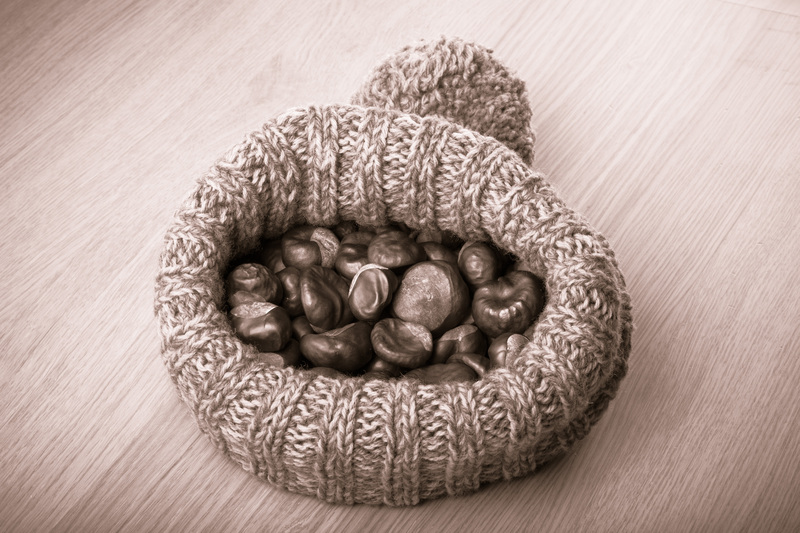Recycling Pots and Pans: What You Need to Know
Every year, millions of households replace their old cookware, leaving mountains of unwanted pots and pans in the wake of new purchases. Have you ever wondered what happens to those old kitchen items, and how best to dispose of them? In this detailed guide, you'll learn everything you need to know about recycling pots and pans, from eco-friendly options to upcycling creativity, ensuring you're making the best choice for your home and the planet.
Why Is Recycling Pots and Pans Important?
Discarded cookware doesn't simply disappear; it often ends up in landfills, contributing to metal waste and environmental strain. Understanding the value of recycling pots and pans is more crucial than ever for the following reasons:
- Reduces landfill burden: Cookware made from metals, ceramics, or plastic can take decades or centuries to break down.
- Conserves resources: Recycling metal and other materials conserves energy and reduces the need for raw materials, cutting down mining impacts.
- Reduces greenhouse gas emissions: Manufacturing new products from recycled materials usually emits less carbon dioxide than producing from raw sources.
- Promotes eco-friendly habits: Learning to recycle kitchenware encourages more sustainable living practices.

Different Types of Pots and Pans: Materials Matter
Pots and pans come in a variety of materials, each requiring specific recycling actions. Here's a closer look:
- Stainless Steel: Durable, corrosion-resistant, and widely accepted by scrap metal recyclers.
- Aluminum: Lightweight and highly recyclable; non-stick coatings can complicate processing.
- Copper: Valuable and highly sought-after by metal recyclers, though often paired with other metals or coatings.
- Cast Iron: Exceptionally recyclable and often restored or upcycled for further use.
- Non-stick Pans: Coatings like Teflon require special handling and may not be accepted everywhere.
- Ceramic: Less commonly accepted in recycling streams, but sometimes recyclable with special programs.
- Enamel-Coated: Metal core can be recycled, but the enamel layer may need separation.
Material Identification Tips
- Check for recycling symbols or material stamps on the bottom of your cookware.
- If unsure, call your local recycling facility with the item's description for guidance.
- Separate lids and handles made from different materials before recycling if possible.
Can You Recycle Old Pots and Pans through Curbside Programs?
Typical curbside recycling programs do not accept pots and pans due to their heavy and non-standard shapes. However, they can often be processed as scrap metal at:
- Local scrap yards
- Metal recycling centers
- Dedicated household metal recycling collections
Before recycling, always remove plastic, rubber, or glass parts like handles or lids and check with your municipality for specific guidelines.
What Happens to Recycled Cookware?
When you responsibly recycle your old pots and pans, you're starting them on a new journey:
- Sorting: Items are sorted by metal type (e.g., aluminum, steel, copper) at the recycling center.
- Processing: The cookware is broken down, and any non-recyclable elements are removed.
- Melting: Metal is melted and purified to be used as raw material for new products such as:
- Automobile parts
- New kitchenware
- Building materials
- Electronics casings
Recycling pots and pans significantly reduces environmental impact and supports the circular economy by returning valuable metals to the market.
Preparing Your Pots and Pans for Recycling
If you're ready to recycle your old cookware, follow these steps for best results:
1. Clean Thoroughly
Wash away any food residue, grease, or other contaminants. This eases the recycling process and increases the acceptability of the item.
2. Dismantle Removable Parts
Remove any plastic, wood, or glass components. Recycle these separately if possible.
3. Assess Condition
If the pan is still usable (minor scratches, no warping), consider donating before recycling. Many shelters or charities accept gently used cookware.
4. Identify the Right Drop-off Location
Find a local scrap metal recycler or household hazardous waste (HHW) site.
5. Separate by Metal Type
If recycling several pans, separate by type (e.g., aluminum, steel, copper) for efficient processing.
Where to Recycle Pots and Pans Locally
If you want to recycle used cookware in your area, here's how to find the best drop-off points:
- Scrap Metal Yards: Most accept metal cookware, and may pay for valuable metals like copper or stainless steel.
- Municipal Recycling Centers: Some community centers run metal drop-off days.
- Retailer Take-back Programs: Certain retailers accept old cookware when you buy new items. Check stores like Target, Best Buy, or Williams Sonoma for recycling events.
- Special Collection Events: Check your city's website for bi-annual recycling fairs or alumni events accepting pots and pans for recycling.
- Charity Shops or Donation Centers: If the items are in usable condition, consider donation over recycling.
What about Non-Stick and Teflon-Coated Pans?
Non-stick pans, especially those coated with Teflon or PTFE, require careful handling:
- Many recycling centers do not accept non-stick cookware due to the chemical coatings, which need special processes for safe handling.
- If the non-stick surface is severely damaged or worn, recycling is preferred over use, but check with your recycler first.
- Some mail-in services or specific brands offer take-back or recycling solutions for non-stick cookware.
If you can't recycle non-stick pans, consider upcycling (see section below) or disposing in regular trash as a last resort.
Creative Ways to Reuse or Upcycle Old Pots and Pans
If recycling cooking pots and pans is not an option, repurposing is a fun and sustainable alternative. Here are some creative ideas:
- Planters: Turn old pots into quirky flower pots or herb gardens--just drill a drainage hole.
- Bird Feeders: Hang an old frying pan in the backyard and fill it with seeds.
- Wall Art: Paint and decorate for use as kitchen-themed wall hangings.
- Toy Storage: Use clean pans or pots as bins for art supplies or children's toys.
- Craft Projects: Make clocks, candle holders, or centerpieces using your old cookware.
Upcycling not only diverts waste but adds character and charm to your home or garden.
The Environmental Impact of Recycling Pots and Pans
Proper disposal and recycling of old pots and pans has significant environmental benefits:
- Saves energy: Recycling aluminum, for instance, saves up to 95% of energy compared to processing new aluminum.
- Reduces pollution: Prevents hazardous materials (like non-stick coatings) from leaching into the soil.
- Decreases mining demand: Recycling metals means less destructive mining and extraction operations.
- Supports local economies: Metal recycling provides jobs and materials for local industries.
Remember: Even small actions, like recycling a single pan, can have a positive ripple effect on the environment.
Frequently Asked Questions about Recycling Pots and Pans
- Can I put broken pots and pans in curbside recycling?
No, most curbside programs do not accept metal cookware. Take it to a scrap metal or dedicated facility. - Are all pots and pans recyclable?
Most metal cookware is recyclable, but ceramic or heavily coated non-stick pans may not be accepted everywhere. - Should I donate used pots and pans?
If they are still functional and safe, donation is a wonderful choice, reducing waste and helping others. - What if my cookware has plastic handles?
Remove and recycle the plastic separately if possible, or dispose of it if your recycler won't accept mixed materials.

Best Practices for Responsible Cookware Disposal
- Repair before replacing: Sometimes simple repair or cleaning can extend a pot's life.
- Research local guidelines: Municipalities have specific rules for recycling cookware--always check first!
- Choose recyclable cookware in the future: When purchasing new items, prefer 100% metal or eco-friendly options for easier recycling down the line.
- Spread the word: Educate friends and neighbors about why it's important to recycle or upcycle old cookware.
Conclusion: Give Your Old Cookware a Second Life
Recycling pots and pans is more than just an eco-friendly act--it's about safeguarding natural resources, minimizing waste, and inspiring creativity in the kitchen and beyond. By understanding the right methods for recycling or reusing your cookware, you help contribute to a sustainable future. Next time you replace an old pan, consider how it can be donated, recycled, or given new life in your garden or garage. Every little action counts towards a greener planet!
Got questions or a creative upcycle tip for old pots and pans? Share your ideas and help inspire a community dedicated to sustainability!